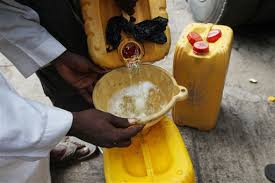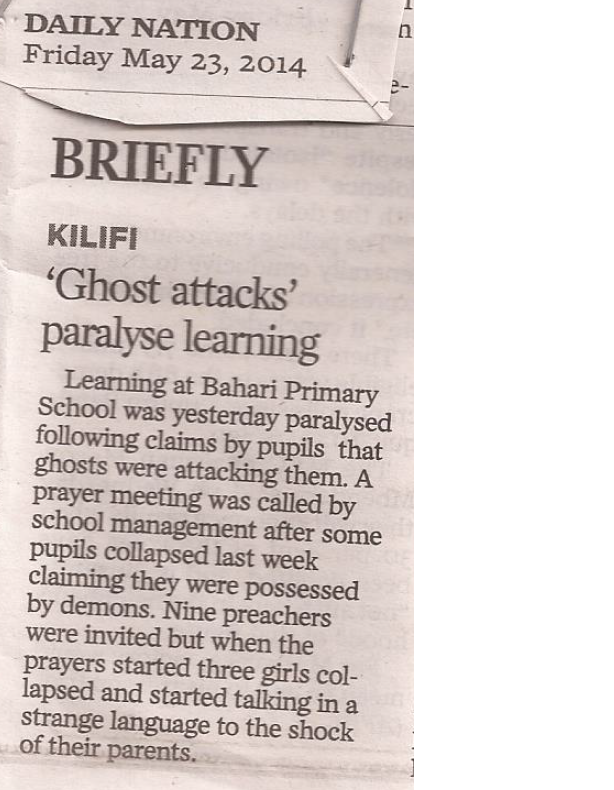
Poisoning in little children
When little ones learn to crawl, everything they come across has to be tasted. The tongue seems to be their most effective way of exploring the world. When my friends and I had toddlers crawling about the house, absolute silence from them put us in instant panic mode.
‘What is that baby of mine chewing on?’ we wondered as we searched for them.
We found millipedes, dead gecko’s and poo in mid-chew a few times, little faces twisted in a grimace as if to say,
‘Mummy what is this? – yuck!’
But it can turn from just disgusting to a bit scary. One of my sons found a half-empty bottle of Calpol (children’s paracetamol bottle) at a friend’s house and guzzled it down.
Luckily, pediatric accidental poisoning is rare.
A few children take overdoses of aspirins, pesticides or contraception pills left lying in the bathroom by mum. However, the vast majority of little ones poison themselves with paraffin (also known as kerosene).
In many homes in Kenya, people put paraffin in empty soda, water or vegetable oil plastic containers. These containers look exactly like those used to store water. Little children cannot differentiate water from paraffin and so drink up paraffin accidentally when thirsty.
Dr Lang did a study at the Kilifi District Hospital looking at data in a 2-year period (2005-6) and reported her findings in the journal of Tropical Medicine and International health, in 2008. Out of almost 10,000 children admitted, only 77 (0.8%) were admitted with poisoning. Of these 77, 48 (62%) were admitted with paraffin poisoning. Most were children between 1 to 2 years and 4 deaths were reported.
Many people believe that if a child swallows paraffin by mistake – this is not a big deal at all. I remember someone I had employed saying,
‘I always tell my house help to just force the child to vomit – mafuta ya taa hayana shida’
I went into lecture mode straight away. Forcing a child who has swallowed paraffin to vomit is actually very dangerous.
It’s not the paraffin in the stomach that injures the child and causes them to die – it’s the paraffin that goes down the lungs that kills the child. Paraffin in the lungs spreads quickly causing damage and inflammation in the lungs – chemical pneumonitis. Due to paraffin in the lungs, the blood does not get enough oxygen and the rest of the body functions are affected by this lack of oxygen. Making a child who has swallowed paraffin vomit is likely to cause more paraffin to go into the lungs.
The earliest symptoms of kerosene are about breathing: choking, coughing, gasping – and this leads to nervous system problems that are thought to be linked to the lack of oxygen caused by the paraffin going into the lungs – headache, dizziness, seizures and coma.
One of the first things that children with paraffin poisoning receive when they get to hospital is oxygen. Getting rid of the paraffin in the stomach is only attempted if there was too much ingested and also under expert care to ensure that no paraffin mistakenly gets into the lungs – a breathing tube is often inserted into the child to avoid this.
So if a child swallows paraffin – Let the child drink water or milk – don’t force them to vomit and rush them to the nearest health facility.
Some countries have taken more stringent measures to reduce paraffin poisoning.
In Australia, blue dye added to paraffin reduced poisoning while in South Africa, families are provided with childproof cabinets to store their paraffin to avoid accidental drinking by little children.
Shotar (2005) conducted a 6-year study in a hospital in Jordan and looked at the patient presentation and found that most poisoning occurs in the dry months of the year when the toddlers get thirsty and seek a drink on their own.
In an article published in the in International Journal of Nursing Practise, Tchiamo of University of Botswana reported that apart from poverty and age of the child, lack of adequate child supervision is a great risk factor. In their study, toddlers left in the care of older children aged between 8-10 years, were at greatest risk of poisoning.
All studies however reported that inadequate package and storage of paraffin makes it easy for little ones to access it.
Any parent or caregiver who has hang around a toddler know how near impossible it is to keep an eye on them 24-7. As much as adult supervision is essential, other more fool-proof methods play an essential part in ensuring that our little ones remain safe. At the moment, Calpol is sold in child-proof containers to avoid over-exposing children to paracetamol. What was done in South Africa can be replicated here, with child-proof containers being used to store kerosene in the house to avoid poisoning.
Another simple thing that we can all do is to ensure that paraffin is always kept far from reach of little ones – so a cupboard high enough from the child would be safe.
Pediatric accidental poisoning is rare – but best to be safe than sorry.





